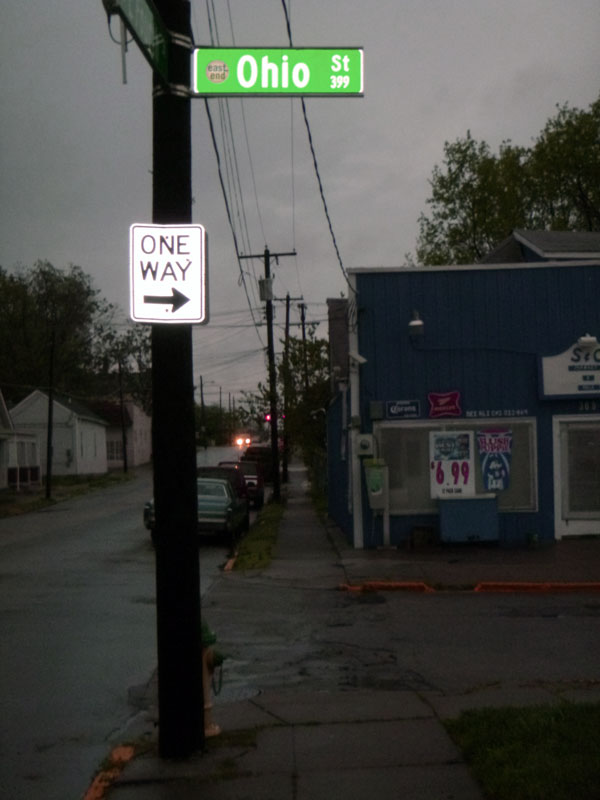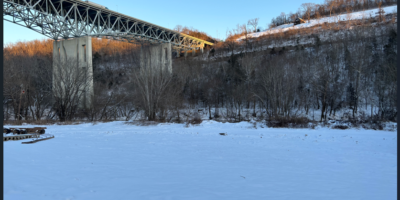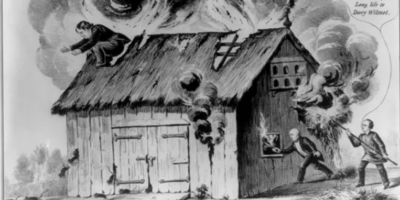By Joseph G. Anthony

“Ohio Street opened up—300 block, then the 400 block. The powers-that-be would select certain streets or certain areas where we could live.” Amanda Cooper Elliot. Photo by Danny Mayer.
“The past is a foreign country; they did things differently there,” says the narrator in the 1970 movie, The Go-Between.
I certainly hope so.
I wonder if it’s a particularly American trait that the past so quickly becomes first a rumor and then something so dead we view it with the same amazement present-day Romans must feel when they try to extend their subway only to discover yet another lost civilization. But I am not speaking of ancient cities. I’m talking of the lifetime memories of many of our fellow Kentuckians.
I say this because I’ve been researching and writing a novel—Wanted: Good Family—timed mostly in 1948 with long visits to the 1920s. It’s set in Fayette, Scott, and Estill Counties. Three of my narrators are African-American, or—as was the still-respectable and self-applied appellation—colored. My other three narrators are white. My white narrators don’t have an easy time of it: being poor and white in the first half of the century in Kentucky wasn’t, as Bette Davis said of old age, for sissies. But being poor and colored in Kentucky…well, if they had been Hindu instead of Baptists, they might have wondered just what the hell they had done in those past lives to be faced with so many challenges: spiritual, emotional, physical.
Every day’s research has brought new astonishments. There was John Wesley Hatch, the first black law student at U.K. Hatch was admitted in 1948 only after a fierce fight and the amendment of the notorious 1904 Day Law, which prohibited integrated education even in private schools. (The law was aimed at Berea College.) In some classes, Hatch had to sit with an empty desk between him and the other white law students. An empty desk, the noxious spirit of the law being kept alive even as the practice was being cracked. (“Yes it makes sense in practice,” I recently read a Frenchman saying, “but does it make sense in theory?”) As a writer I had to leave the empty desk metaphor alone: nothing left for me to say.
There was a pleasant surprise in finding out that Lexington’s police force had at least three black policemen even way back when. The rub, though, was that they patrolled only “colored” areas and could not arrest whites. They had to call it in and wait for white cops to collar a white man, even if they caught him in the act. Surely the practice had to be different than the theory, I’ve asked a few older African-Americans. Even the French would agree with such common sense modification. No, they assured me: that’s the way it was.
Some things I already knew about—but only generally. I knew, for example, that housing for blacks was restricted to certain areas, though the variety and richness of the many different neighborhoods surprised me. Many of the names have a certain poetry: Cadentown, Uttingertown, Fort Springs, Speigle Heights, Smithown, Taylortown, Pralltown, Kinkeadtown, Brucetown. But if the names had poetry, the reality was more like bad prose. Many of these neighborhoods had no sewage; many houses had no indoor plumbing. Some shotguns depended only on luck and grace to keep them standing.
Of course, there were many finely maintained houses in these neighborhoods. Not all the “colored” were poor. But poor or not, you lived in the “colored” section. I knew this, but didn’t understand, until I listened to the people talk about what it meant to live within these borders.
In 1948, housing was very tight for everyone—Lexington still had rent control. Returning World War II veterans were having babies and all those houses that didn’t get built in the Depression or the War still hadn’t been built.
But hard as it was on whites, blacks had it tougher. Here’s Amanda Cooper Elliot in one of UK’s oral history tapes, talking about Ohio Street.
“Ohio Street opened up—300 block, then the 400 block. The powers-that-be would select certain streets or certain areas where we could live.”
Ms. Elliot then talks of one man who didn’t follow the rules:
”First black man on Breckenridge Street moved right on the corner and he had a rough time… Bombs in cans and throw them on his porch…garbage in yard… But he didn’t move. But we couldn’t move just anywhere” (Amanda Cooper Elliot, born 1921, living in Kinkeadtown, interviewed by Betsy Adler, 4/15/93).
Ohio Street opening up, block by block, as the powers-that-be tried to dictate people’s lives in a way that seems astonishing to us. The powers had a lot of informal help with their rules. I discovered several accounts where black businesses or homes were firebombed –when “colored” went where they weren’t welcome. Right here in very polite Lexington.
Scott and Estill Counties were less polite in their racism.
As a writer, I want to bring that past home to us. Because, as Faulkner tells us, it’s not past. The attitudes may have mellowed, the racism become less overt, but the history that formed us—all of us, white, black, “colored”—is right under the surface. And we’re in luck: unlike the Romans, we don’t have to dig up any subways to find it.
Just ask any African-American of a certain age: they’ll tell you where to dig.




Nancy Dreher
I can’t wait to read. I have family in Estill county “of a certain age” who have told me lots of stories that include “the only black family living in town” (Irvine), the only colored boy in class in elementary school, the racism so prevalent but more of a ‘novelty’ than anything. My interest in Estill county has grown these last few years as I may end up there to finish out my life, and it would be great to know more history. 🙂
Robert Anthony
I think I recognize the street in the photo–not that far as you state. As you eloquently state, many other “places” are also not so far away. Very nice–just remember to bring in the empty trash cans. Love, Bob